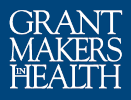Brittney Daniel, Health Program Officer, California Community Foundation
Alex Chan, Director, Nonprofit Finance Fund
Eskedar Getahun, Consultant, Nonprofit Finance Fund
Alexa Eggleston, Founder, Audacia Consulting
In 2022, Cedars-Sinai, HealthNet, and the California Community Foundation launched a philanthropic partnership to support a learning collaborative for 11 providers that serve the unhoused to receive capacity building, policy guidance, and other assistance to take advantage of the new CalAIM Community Supports (CS) housing services. Nonprofit Finance Fund engaged providers and provided capacity building and support to each organization to explore CalAIM and plan for their potential engagement in the Medi-Cal service model. Corporation for Supportive Housing is working on an advocacy agenda with the provider cohort as they experienced challenges and barriers during the process. The goal was for their learnings to inform current and future policy and advocacy discussions about the opportunities, challenges, and needs related to Community Supports to promote the highest quality of care for individuals and families who are at risk of becoming unhoused or who are already unhoused.
In the Fall of 2022, California Community Foundation funded an additional group of grassroots homeless service providers to work independently with consultants to increase and broaden the type of providers who are learning about and exploring how Community Supports fit into their service delivery scope.
CalAIM Landscape
Homeless service providers in the cohort indicated they are experiencing many of the same challenges since the launch. Contract negotiations, capacity building, and networking continue to be an issue across the participating organizations. Despite barriers they continue to express their commitment to making Community Supports work with the support of staff, Managed Care Plans (MCP), and philanthropic partners. The overall uptake and adoption of the trio of housing-related Community Supports by community-based organizations (CBOs) that serve the unhoused continues to be slow (Daniel et al. 2022). In Los Angeles County, according to the most recent 2022 data from the California Department of Health Care Services:
- Out of 3.5 million members, 15,848 Medi-Cal Managed Care Plan (MCP) members received CS services;
- 39,990 total CS services were provided to eligible MCP members, with an overall utilization rate of 113 (# of services/10k MCP members);
- 11,866 Housing Tenancy and Sustaining Services were provided, making it the most used service; and
- 4,349 Housing Transition and Navigation Services were provided.
COHORT UPDATES
For two years, the cohort attended quarterly convenings, information sessions, and deep dive sessions with Nonprofit Finance Fund. This opportunity allowed providers to build rapport with Managed Care Plans, assess their programmatic and fiscal capacity as well as intentionally explore the Medi-Cal business model. Currently, five cohort members are directly contracted with two or more managed care plans (MCP) to provide community supports and/or enhanced care management under CalAIM. One additional cohort member is subcontracted with a major health center to provide community supports.
Challenges Experienced by Los Angeles Homeless Services Providers
Current CalAIM requirements and processes present significant barriers to entry for many of the organizations best positioned to respond to their communities’ needs, particularly community-centered organizations led by and serving people of color. To start, a primary route to provide services and receive funding under CalAIM entails providers entering into contracts directly with Medi-Cal Managed Care Plans. These contracts require providers to utilize models of service delivery, funding, and administration from the health care sector. Many community-based organizations have never worked with these models of care and administration.
For many CBOs, contracting and delivering services under CalAIM involves considerable operational shifts and sizeable investment of resources. In addition, CBOs sometimes interface with multiple MCPs, each with their own processes and structures. Organizations involved in CalAIM in multiple counties highlight that to date, their experiences in LA County have been considerably more difficult than in other communities.
Some of the challenges that surfaced by cohort members that have engaged with CalAIM:
- Complex contracting processes with MCPs requiring CBOs to dedicate substantial unfunded time and expenses;
- Lack of funding for CBOs to establish the infrastructure necessary to work with MCPs through CalAIM (e.g., software, training, hiring of new staff/contractors to perform outreach, conducting billing, and handling the additional administration under the program);
- Incomplete and shifting information on critical processes and the structure of services, particularly for client outreach and referrals;
- Uncertain and lower-than-expected client volumes that impede CBOs’ ability to cover costs;
- Variation across LA’s main MCPs that require CBOs to learn and adapt to a complex network of different guidelines, systems, and processes; and
- Payment rates that do not align with the high-touch and time-intensive approach required to achieve the outcomes desired under CalAIM.
Advocacy
Nonprofit Finance Fund and California Community Foundation reflected on how to center the voices, experiences, and expertise of the CBOs who are intended to be key CalAIM partners, and how to improve the systems and policies that prevent CalAIM from realizing its full potential. This work includes advocacy on both state and local levels. As part of this effort, Nonprofit Finance Fund and California Community Foundation partnered with Corporation for Supportive Housing to engage LA homeless services providers in strategies that promote a future for CalAIM in which CBOs are recognized and compensated for the integral role they play in the transformed healthcare delivery system envisioned under CalAIM.
At the state level, such efforts, led by Corporation for Supportive Housing, include:
- An advisory committee that includes people with lived experience of homelessness, service providers, and managed care plans and a project to standardize CalAIM tools, processes, and policies that all MCPs could adopt to increase equity and access to housing-related Community Supports;
- Elevating recommendations of specific actions the Department of Health Care Services could take to address shared challenges related to housing-related Community Supports through coordination of service provider voices; and
- Working toward a Medi-Cal entitlement that offers ongoing and increased payment for evidence-based services, which would allow for the scaling of high-quality housing supports to serve more Medi-Cal beneficiaries as an entitlement that would offer federal funding contributions toward the costs of services.
At the local level in LA County, efforts led by Nonprofit Finance Fund, Corporation for Supportive Housing, and California Community Foundation include:
- Supporting a cohort of LA providers to develop recommendations and advocate to LA-based MCPs and public agencies to address CBOs’ most urgent “pain points” in delivering CalAIM funded housing-related community supports, including the low payment rates, lack of start-up funding and heavy administrative lift of implementing discrete Community Service programs across multiple MCPs—each with their own requirements, systems, and processes.
Opportunities
As CalAIM continues to evolve, there is an immediate opportunity for philanthropy to serve a critical role in filling in the resource gaps many CBOs pursuing CalAIM currently face. The following are specific actions funders can take:
- Invest in CalAIM “start-up” capital: Cohort members unanimously reported a need for grants to cover the significant up-front cost to “ready” their organizations for CalAIM. Several providers reported that it can take an investment of several hundreds of thousands of dollars to build and adopt infrastructure like new IT systems, hire new staff, acquire health care billing expertise, and conduct staff training. Although the state has made funding available to providers through the PATH CITED (Capacity and Infrastructure Transition, Expansion and Development) program, one agency noted: “CITED is not transparent enough to be able to plan around and build a strategy for. Plus, applicants need to be contracted or on the way to a contract to apply. Philanthropy can demonstrate that they value CBOs’ expertise and central role in CalAIM by providing dedicated start-up capital to lower these entry barriers and supporting CBOs in establishing a sound foundation to start their CalAIM work from a position of strength.
- Fill gaps during CalAIM ramp-up: Once contracted, CBOs reported having hired and trained staff to be ready to deliver services under CalAIM, only to have low referrals. As a result, many CBOs have run CalAIM at a loss over the course of several months as services gradually ramp up. Philanthropy can support the ongoing engagement and success of service providers by providing funding to supplement and subsidize current CalAIM revenues and to enable organizations to cover costs during the slow and long ramp-up phase.
- Provide working capital to help CBOs manage cash flow challenges: While CalAIM has the potential to eventually become a significant and consistent funding source for CBOs, many LA homeless services agencies are grappling with the challenges of their existing funding streams. LA nonprofits that responded toNonprofit Finance Fund’s 2022 State of the Sector Survey reported having limited levels of cash on hand and experiencing greater delays in receiving government payment than their peers nationally. The result is an increasing number of organizations facing frequent cash flow crises due to the combination of underfunded contracts and delayed payments on reimbursement-based agreements. While working capital grants or loans would not solve the underlying root issues behind CBOs’ cash flow challenges, they would help stabilize day-to-day operations and position LA homeless services agencies to take on strategic initiatives such as CalAIM more readily.
- Influence the CalAIM system: To harness CalAIM’s potential to transform comprehensive health care, philanthropy can use their networks to influence those in positions of power—including the state and MCPs. Philanthropy can also support CBOs’ advocacy efforts through grantmaking and by bringing key CalAIM stakeholders to the same tables. This includes government officials, leaders of health plans, CBO leaders, and those most directly influenced by CalAIM’s programs.
The takeaway for funders is to keep our community-based organizations financially stable and able to expand services to meet the needs of the community. The lasting impact in health systems transformation calls for government and philanthropic funders to employ practices that are built on a foundation of trust in the organizations that work most closely with the communities being served. Given that over one in three Medi-Cal beneficiaries live in LA County (California Health Care Foundation 2023), the promise of CalAIM requires that the program be successfully implemented in the state’s most populous county. These efforts are also in combination with the campaign for Measure H renewal in LA. Many of the organizations in the cohort received dollars to expand programming in 2016, this 10-year ballot measure will sunset in 2027. This cohort participated in an exercise to explore their funding models if Measure H does not pass again. Now is the time for funders to step in and help influence the policy changes needed while also providing capital to help realize CalAIM’s potential for creating a healthier California.
References
California Department of Health Care Services. Year One Report: County- and Plan-Level Data, Medi-Cal Enhanced Care Management (ECM) and Community Supports Calendar Year (CY) 2022 Implementation Report. Sacremento, CA: August 3, 2023. Medi-Cal Enhanced Care Management and Community Supports (arcgis.com)
California Health Care Foundation. Medi-Cal Enrollment Tracking Tool. Oakland, CA: May 11, 2023. Medi-Cal Enrollment Tracking Tool – California Health Care Foundation (chcf.org)
Daniel, Brittney, Laura Hogan, Erin Jackson-Ward, Alissa Ko, Dorothy M. Seleski, and Rosemary Veniegas. “Homelessness and Health Equity: Health Funders’ Alignment and California’s Next Medicaid Waiver.” Views from the Field, GIH Bulletin, January 21, 2022.
Nonprofit Finance Fund. 2022 Survey – A closer look at LA-area nonprofits. Los Angeles, CA: June 29, 2022. 2022 Survey – A closer look at LA-area nonprofits | Nonprofit Finance Fund (nff.org)

